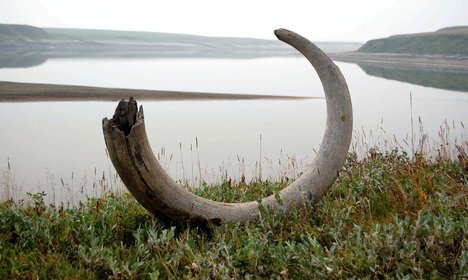 “A mammoth tusk.” Source of caption and photo: online version of the NYT article quoted and cited below.
“A mammoth tusk.” Source of caption and photo: online version of the NYT article quoted and cited below.
(p. D2) A 50,000 year analysis of Arctic vegetation history reveals that a change in diet may have led to the demise of the woolly mammoth, the woolly rhinoceros and other large animals, according to a study in the journal Nature. About 10,000 years ago in the Arctic steppe, grasslands began to replace forbs, a flowery plant cover. Animals may have relied on forbs as a source of protein.
For the original story, see:
“‘Observatory; Tiny Plants’ Loss May Have Doomed Mammoths.” The New York Times (Tues., FEB. 11, 2014): D2.
(Note: Sindya N. Bhanoo is listed as the author of the second “Observatory” short entry, but it is not at all clear if that is intended to imply that she also is author of the first “Observatiory” short entry on the “Tiny Plants Loss . . . ” Her name does not appear anywhere in the online version.)
(Note: the online version of the interview has the date FEB. 10, 2014, and has the title “‘SCIENCE; Tiny Plants’ Loss May Have Doomed Mammoths.” )
The study in Nature mentioned above, is:
Willerslev, Eske, John Davison, Mari Moora, Martin Zobel, Eric Coissac, Mary E. Edwards, Eline D. Lorenzen, Mette Vestergård, Galina Gussarova, James Haile, Joseph Craine, Ludovic Gielly, Sanne Boessenkool, Laura S. Epp, Peter B. Pearman, Rachid Cheddadi, David Murray, Kari Anne Bråthen, Nigel Yoccoz, and Heather Binney. “Fifty Thousand Years of Arctic Vegetation and Megafaunal Diet.” Nature 506, no. 7486 (Feb. 6, 2014): 47-51.
